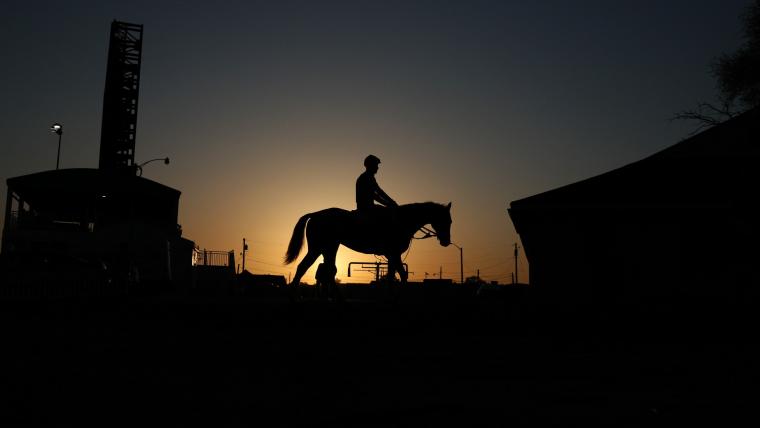
The 2023 Kentucky Derby drew plenty of criticism for a wave of horse deaths. There were seven horse deaths, including two horses that were euthanized due to knee and ankle injuries.
The deaths of horses have been a major setback for sports fans of horse racing. Injuries to the legs of horses aren’t the same as leg injuries sustained by humans or other animals. Horses often have to be euthanized after such injuries.
That aspect of horse racing has often loomed large over the sport. Euthanization, however, is an aspect of all types of horse handling, from racing to simple life on a farm.
Here’s the reason for this unfortunate reality.
Why are horses euthanized when they break their leg?
There are complications that happen due to the body structure of horses when they break their legs. Because their weight is so heavy on thinner legs, there is a lot of pressure on the legs at all times, New York State Gaming Commission medical director Dr. Scott E. Palmer told The New York Times.
“All their muscles are up high,” Palmer told the Times. “When you get down into the lower part of the leg, there is literally skin and bones and tendons and blood vessels and nerves. If something breaks, the circulation of the area can be easily compromised by the injury.”
Palmer described repairing a broken horse leg as more difficult than repairing a broken leg for other humans and mammals, saying that it can often be more than just a crack. The bone can often be shattered.
The other challenge is that unlike humans who can rest when their leg is broken, horses spend all their time on their four legs, including when they sleep. Trying to stand on three legs for a horse can lead to other problems, including laminitis, a painful condition between the hoof and bone of the other legs.
Palmer said a horse can quickly go from just having a broken leg to having a broken leg and another that cannot be stood on due to the pain.
“The hoof is attached to the bone by organic fasteners like a velcro system,” Palmer told the Times. “If those little hooks become swollen, they become unhooked. That is impossible to take care of.”
It’s not as easy as horses laying down, either. That can cause muscle damage, restricted blood flow, and blood pooling in the lungs, per The New York Times, and repairing a horse’s broken bone can cost thousands of dollars.
The Times recounted what happened to 2006 Kentucky Derby winner Barbaro, who broke his leg in the Preakness. The leg was broken into 20 pieces and required five hours of surgery with 27 pins and a stainless steel plate added. There was no compound fracture, but Palmer still described it as “horrible.” He believed surgery was possible to save the horse.
However, after two months, Barbaro’s hoof had to be removed due to laminitis. The hoof did not grow back properly, eventually had a foot bruise and then developed laminitis in Barbaro’s other two legs. Despite multiple surgeries attempting to save him, Barbaro was euthanized on Jan. 29, 2007, just over eight months after the injury.
“We just reached a point where it was going to be difficult for him to go on without pain,” Barbaro owner Roy Jackson said.
Though the Times reported there have been strides made in better treating horses, there is a major challenge in horses surviving after breaking their legs.
“We have to put a broken leg back together again with screws and plates, and they have to be able to stand on it immediately after surgery,” Palmer told the Times. “That is an enormous challenge.”






